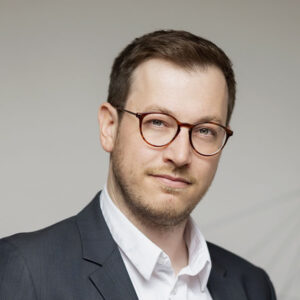From climate-neutral buses and trucks to shipping on Lake Constance – HyAllgäu*-Bodensee draws a positive interim conclusion at the start of the second project phase. The project network has analysed existing potentials for hydrogen applications in the Lake Constance (Bodensee) region and in the Allgäu, brought together concrete projects and pioneering ideas, and established a broad network of local companies, municipalities and other stakeholders.
“We are delighted with the great interest being shown in the region. Since April of this year, talks have been held with more than 120 stakeholders who are contributing innovative ideas along with concrete projects already. That in itself is a tremendous success and confirms yet one more time that we are moving in the right direction with green hydrogen. Produced regionally and also supra-regionally from wind and sun, it makes us less dependent on energy imports, brings added value home, while at the same time also contributing to climate protection,” says Elmar Stegmann, District Administrator in the Lindau district (Lake Constance), who has taken over the leadership of the HyAllgäu*-Bodensee project.
During a coordination meeting on 6 December, the HyAllgäu*-Bodensee project network presented a positive interim assessment: Since the start of work in April 2022, various projects in the planning and preparation stage have been identified and evaluated throughout the region. To this end, numerous individual discussions were held and two well-attended specialist events were organised, which were held in Lindau (Lake Constance) and Friedrichshafen. The aim of this conceptual work is to bring green hydrogen together with application projects throughout the entire region.
“Already today, we can recognise the contours of a new hydrogen economy from this work. By 2030, there could be a demand for about 1,000 to 3,000 tonnes of hydrogen per year in the region as a whole. We should prepare for this here locally and not wait for others to beat us to it,” explains Elmar Stegmann. “The HyAllgäu*-Bodensee project helps us to do this by showing ecological and economic potential, making projects concrete and bringing the right people together for this purpose.”
In the second project phase, which commenced at the beginning of December, the elements that are now in place are to be put together to form a large overall picture. This will involve taking into account issues of required quantities and scheduling as well as spatial availability and the technology needed: Where could hydrogen be produced? Where in the region are refuelling stations necessary – and from which point in time? How will the hydrogen be delivered there and what pressure levels will need to be offered for refuelling cars, trucks and buses? All this will be explored in detail and new ideas and projects will be stimulated in this way.
Possible locations for hydrogen refuelling stations have been identified in the district and city of Lindau (Lake Constance), in Kaufbeuren and in the district of Ostallgäu. Concrete projects in their spatial surroundings are now being consolidated into clusters and further developed together. In the district of Lindau (Lake Constance), for example, the six buses on routes 11, 12, 21 and 22 are to run on hydrogen from as early as 2024. Private operators also intend to put the first fuel cell trucks and further hydrogen buses into operation here as “early adopters”. In the city of Lindau (Lake Constance), activities are focused on the conversion of shipping on Lake Constance and the use of hydrogen trucks by a freight forwarder. The possibility of producing hydrogen locally is also being examined. In Kaufbeuren, the focus is on heavy-duty trucks with fuel cell powertrains. This form of propulsion has particular advantages over battery-electric powertrains, especially for heavy vehicles with high energy requirements. Finally, in the district of Ostallgäu, the focus at the Buchloe site is on the production of green hydrogen with wind turbines and photovoltaic systems. The future-oriented utilisation of hydrogen in decarbonised industrial processes is also being pushed forward.
In Kempten, Oberallgäu as well as in Memmingen and Unterallgäu, but also in the neighbouring regions as far away as Austria, further clusters can follow on this basis. On the whole, the largest hydrogen region in southern Germany is to contribute to energy security and climate protection in this manner. The participation of companies – and in particular of local small and medium-sized enterprises – is expressly encouraged and possible at any point in time.
The project is funded by the Federal Ministry of Digital and Transport (BMDV – Bundesministerium für Digitales und Verkehr) within the scope of the National Innovation Programme Hydrogen and Fuel Cell Technology (NIP2) with a total funding volume of 400,000 euros.
“We are delighted about the progress in the HyExpert region HyAllgäu*-Bodensee. The great interest of the local stakeholders in the project clearly shows how pressing the considerations regarding the conversion to alternative fuels already are. The conversion needs to be accompanied by networking and concrete planning with regard to the projects to succeed. Now it is time to transfer the projects along the hydrogen value chain into a feasibility study and take the next step towards becoming an implementing hydrogen region,” says Alexander Gehling, Programme Manager in the NIP and coordinator of HyLand regional funding at NOW, which coordinates the funding programme on behalf of the BMDV.
The final implementation concept will be presented in Kaufbeuren on 23 March 2023. The concept will encompass production, application, transport and storage, and will therefore create a seamless regional value chain for the climate-friendly energy carrier.
Project network
Municipality of Fuchstal • City of Kaufbeuren • City of Constance • District of Lindau (Lake Constance), in the lead • City of Lindau • City of Memmingen • District of Ostallgäu • District of Unterallgäu

